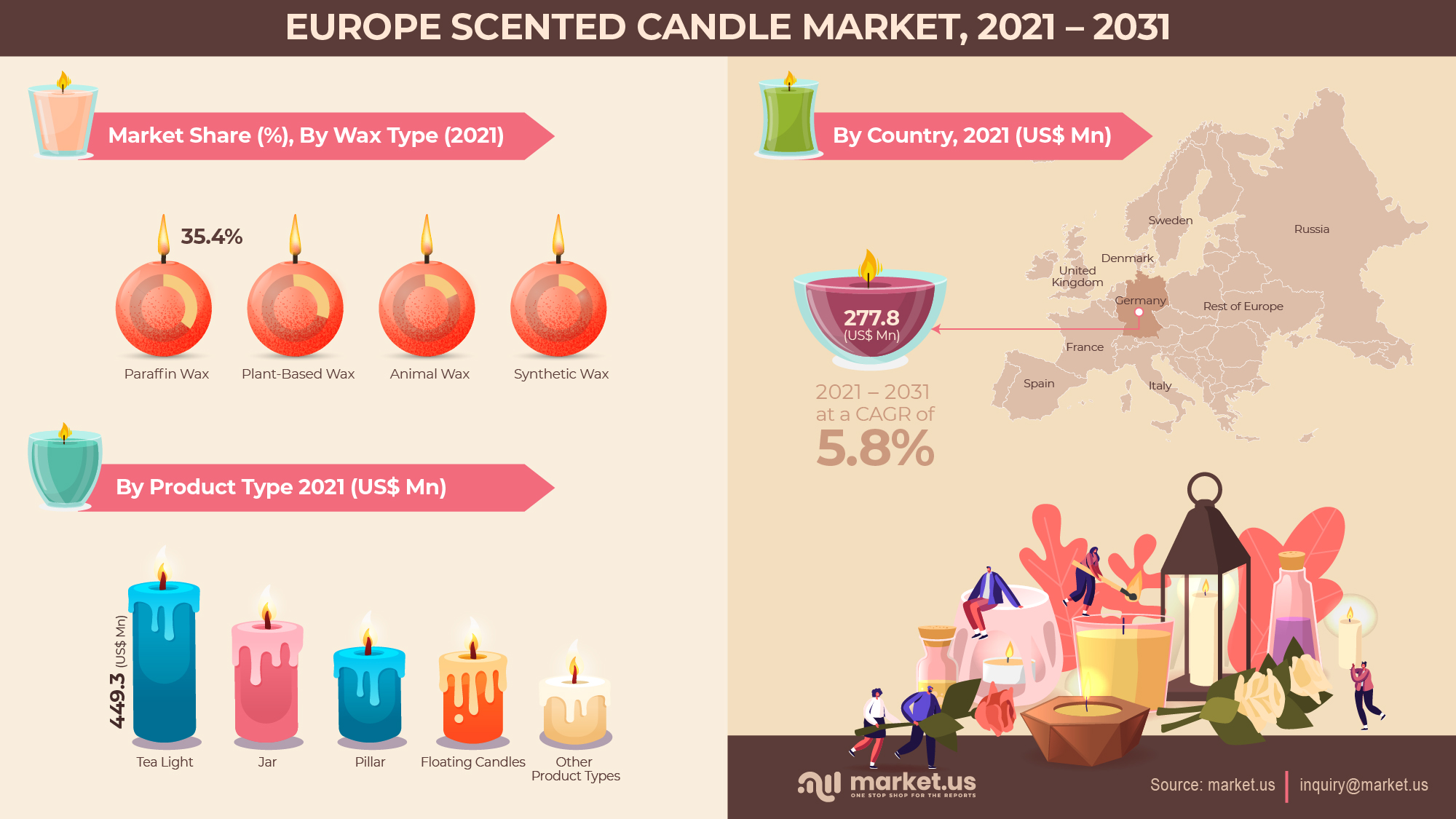
Europe Scented Candle Market Infographics Description:
- The europe scented candle market is estimated at US$ 1,276.5 Mn in 2021.
- Europe scented candle market is projected to reach US$ 2,207.1 Mn in 2031 at a CAGR of 5.8% from 2021 to 2031.
- Amongst wax type, paraffin wax segment in the europe scented candle market is estimated to account for a majority revenue share of 35.3% in 2021 end.
- Among all the product type segments, tea light is expected to register the highest CAGR of over 7.0%, followed by the other applications segment.
- Germany is expected to dominate the europe scented candle market. It is expected to account for the largest market revenue share as compared to that of markets in other countries.
- Companies profiled in the report are – The Procter & Gamble Company, Reckitt Benckiser Group Plc (Air Wick), The Estée Lauder Companies, Inc. (Le Labo Fragrances & Jo Malone London), Newell Brands, Inc., Lalique Group SA, Portmeirion Group Limited (Waxlyrical), GALA GROUP GMBH, Diptyque Paris, Heaven Scent Incense Limited, Whax Holdings Ltd., and others.





